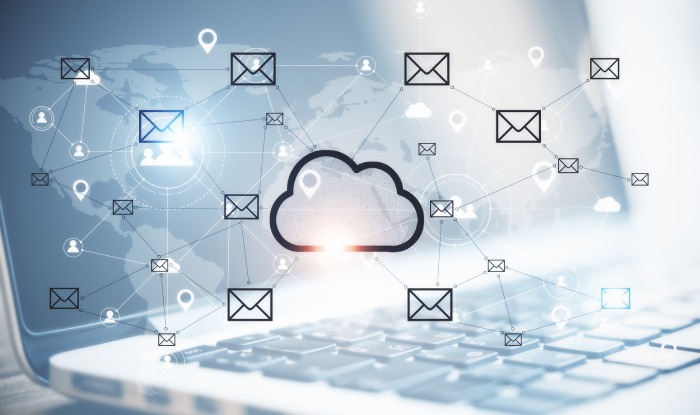When it comes to marketing, branding, or any communication, a professional-looking email has no alternative. As much as 75% of the consumers associate professional business emails with loyalty for small enterprises.
Of course, Gmail and Outlook would offer you free options. However, organizations need to shell out a basic amount to establish a beyond-ordinary brand image. When you have your enterprise name integrated into your email ID, it speaks for your brand, prioritizing elements like better customer service, brand recognition, security, and mitigating spam.
Here is what a professional email ID looks like; let’s take your business name as ABC.
- A generic business email looks something like abc@gmail.com
- However, when you opt for email hosting services and get a professional business email, it would be help@abc.com or customercare@abc.com. In a nutshell, you have your brand name incorporated within the email ID.
In this post, we will guide you with setting up your professional business email and securing the same.
Steps To Follow While Setting Up A Professional Business Email
Step:1 – Choosing the Email Hosting Provider
Once you have bought the domain for your business, the first step for setting up the email for your domain is to find the right email hosting provider. The factors to look at while looking for an email hosting provider include the number of mailboxes they provide, security features, storage space, and additional tools to secure you against online vulnerabilities.
Some reputed service providers also provide comprehensive packages like website and email hosting or shared hosting deals. Depending on the number of business email IDs you need, you need to choose the plan. Now, you can frame the new business email ID as per your requirement (for example, customercare@yourbusiness.com or contact@yourbusiness.com).
Step:2 – Setting Up DNS Records
Once you have selected the email ID, the next task is to set up your DNS records. Domain Name Server or Domain Name System (DNS) connects web servers to the respective domain names. DNS records would be necessary every time you connect on the internet.
At this stage, you need to integrate the newly purchased email with the respective domain. Next, the hosting service provider will send you an email demonstrating the process of setting up the DNS. In case you opt for a different domain name provider and hosting provider, you need to adjust the name servers manually.
In the subsequent stages, you must ensure to sync your business email with your phone number and third-party software that you have been using.
Several hosting providers also offer these services without any additional charges. Hence, for those who want to focus on more pressing needs for their business and want someone to handle their email requirements end-to-end, it makes sense to go for these providers.
Things To Consider When You Choose Your Hosting Provider
Security
As the owner of a newly set-up SME, you must be proactive in securing your clients’ interests, and this includes protecting your email content (sent to your customers and clients) against online adversaries.
Inadequate security of your emails may lead to loss of reputation, financial loss, and of course, disruption of your operations. A report reveals that email leaks lead to a financial loss of around $8,700 for small organizations. Therefore, you should look out for an email service provider with advanced security features like:
- Anti-malware
- Data loss prevention
- Spam filtering
Ease Of Use
It is logical to go for an email service provider offering you maximum control over the operational environment. At the same time, you should be receiving the necessary assistance whenever required. The best email hosting companies offer 24/7 support over chat, phone, and email.
It is logical to opt for providers offering easy-to-use web-based interfaces. This would enable you to accomplish the administrative tasks seamlessly.
Some hosting providers also come with the email continuity feature. It serves as a backup mechanism in case your mail server goes down. This ensures that you would continue sending emails and receiving them from your business email address during this time.
Maximum Storage Space
An overloaded or cluttered inbox can lead to confusion. It would be frustrating indeed if you fail to find the important messages at peak hours. Besides, you need to archive important emails to prevent them from getting deleted accidentally. Enterprises opt for email services that offer adequate storage space. Presently, some of the leading hosting companies provide advanced features like automated archiving.
Why Setting Up SPF, DKIM And DMARC Is Crucial
Once you have your business’s email set up, the next crucial term you must be familiar with is email authentication. It enhances the credibility and deliverability of the emails you dispatch. Email authentication deploys specific protocols, confirming that your domain has sent those messages. As a result, the chances of your messages landing up in the spam boxes are lower (which is crucial when you are using email as a marketing medium).
Therefore, email authentication boosts the brand reputation significantly, ensuring that the messages reach the desired destination. In this context, you would come across three protocols of email security and authentication. These are SPF, DKIM, and DMARC. These three protocols complement each other to ensure email authentication.
- SPF (Sender Policy Framework) strengthens the DNS servers, monitoring the users capable of dispatching emails from a particular domain. In the process, this can secure you against domain spoofing. SPF assists the mail servers in detecting whether or not the email came from the regular domain.
- DKIM (DomainKeys Identified Mail) assures that your email content is not compromised or tampered with. An encryption algorithm works in DKIM to generate two electronic keys, private and public. The private key is present on the mail server, while the public key is present in the DNS TXT record. Therefore, only domain administrators can manage DKIM records once they create the same.
- DMARC (Domain-based Message Authentication, Reporting, and Conformance) holds the first two protocols together with its specified set of policies. Besides, it connects the domain name of the sender with the one present in the form.
Final Words
As email continues to be the primary business communication method, you must get a professional email for your business as soon as your domain is set up. The ideal email hosting provider must offer email security, 24/7 support, among other crucial features. Moreover, when you set up your professional business email, the last thing you would expect is to get your messages blocked by spam filters. The three protocols, as discussed above, work in perfect sync to ensure a seamless and authentic email delivery mechanism. This explains why successful marketers count on reliable email hosting providers and have all three email authentication protocols in place.


